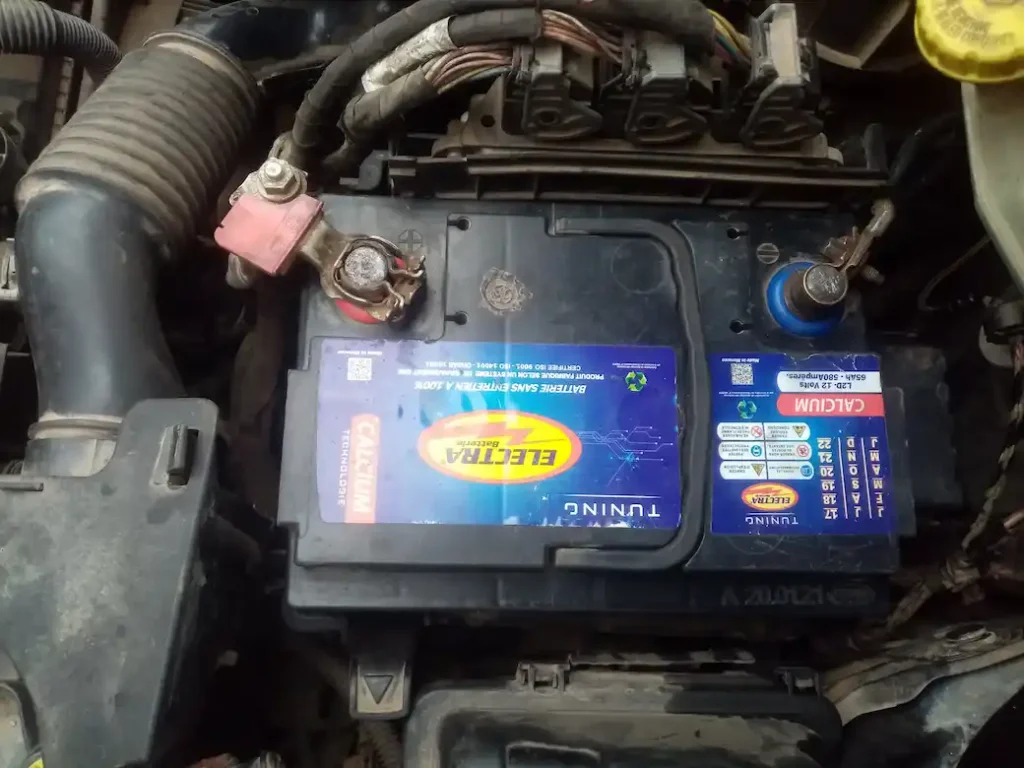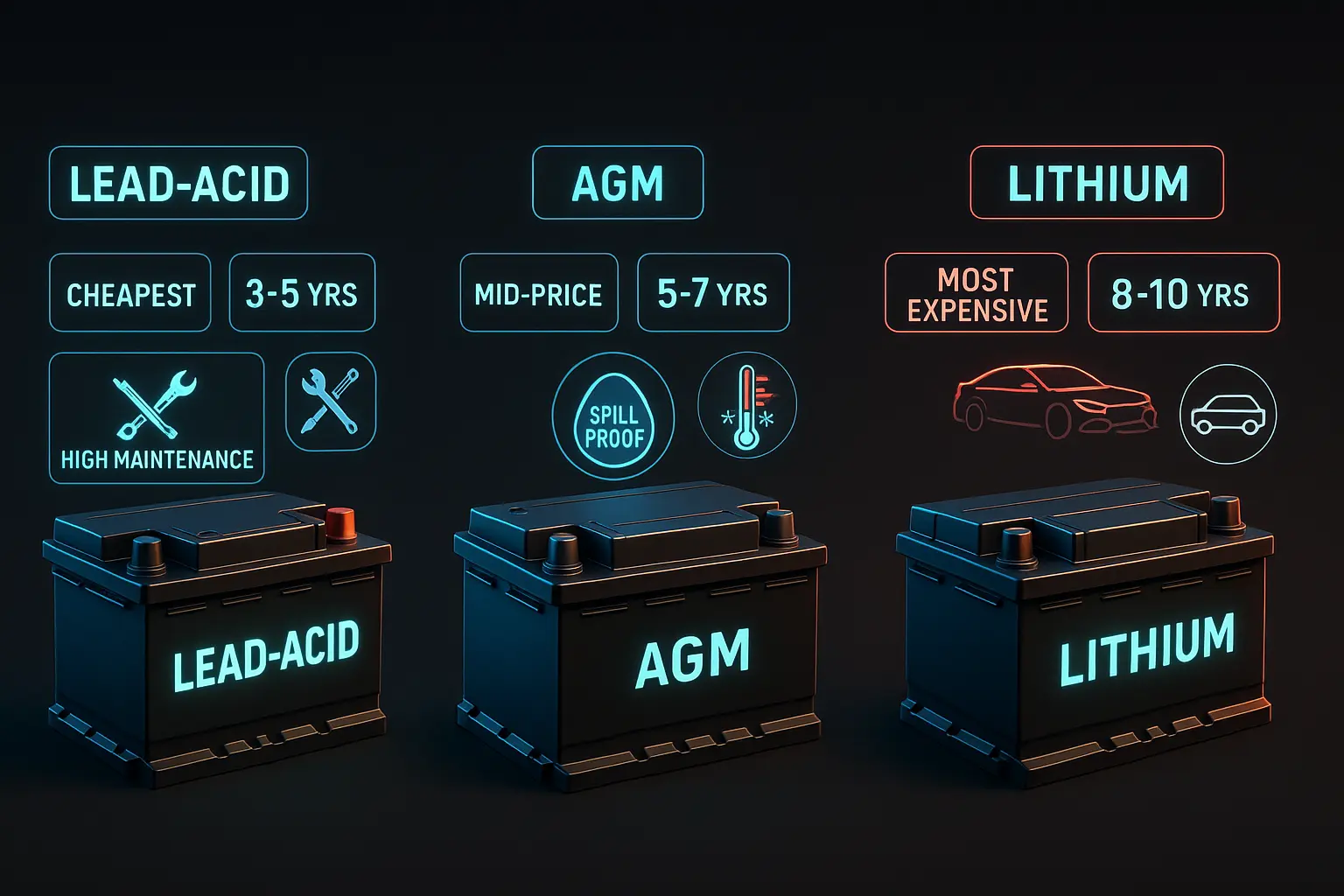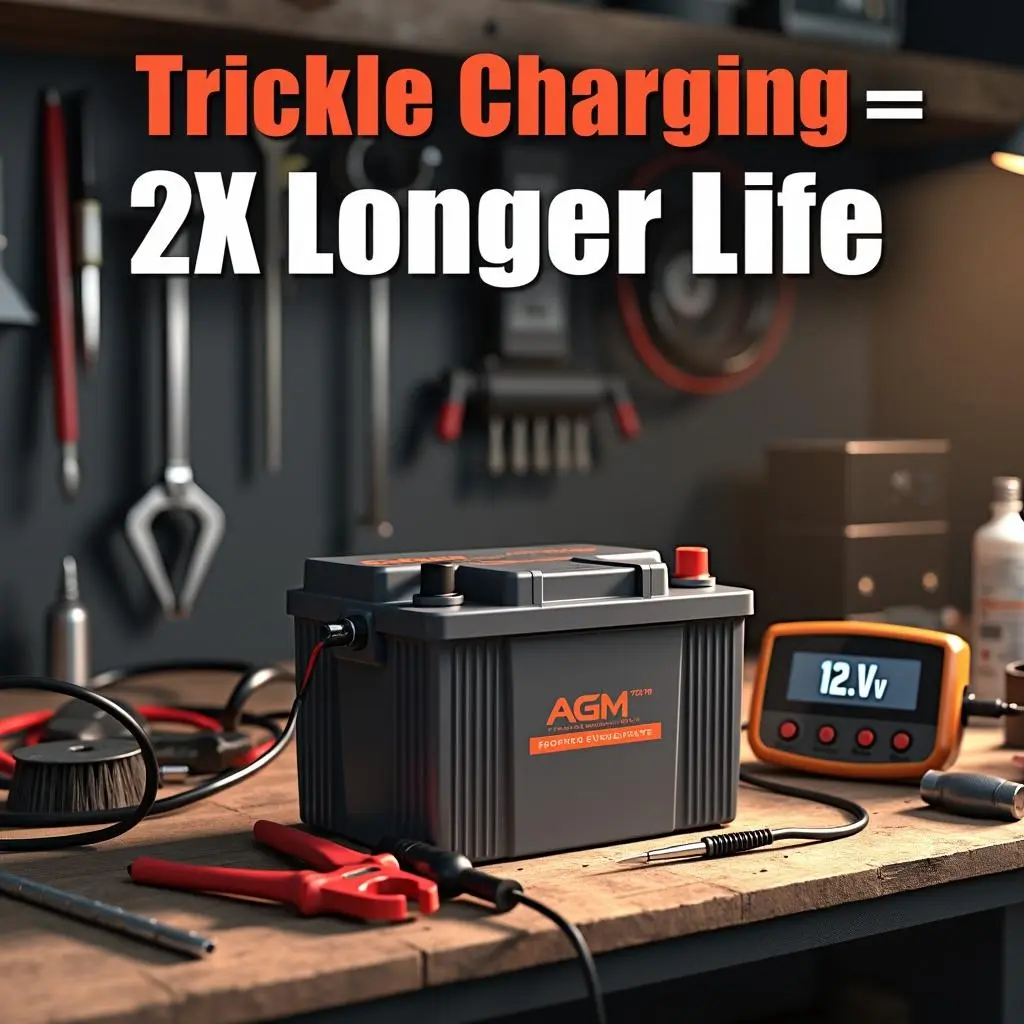🚗 How Long Should a Car Battery Last? (The Truth Most Mechanics Won’t Tell You)
That heart-stopping moment when your car won’t start isn’t just bad luck – it’s your battery’s final cry for help after months of suffering. While manufacturers claim 3-5 years, here’s what they don’t tell you:

✔️ Your daily 5-minute commute is silently murdering your battery
✔️ That white crust on your terminals? It’s stealing years of lifespan
✔️ Why brand new batteries sometimes die in 12 months
✔️ The $10 trick that can add 2+ years to your battery’s life
As a mechanic, I’ve seen batteries fail in 18 months and others last 7+ years – the difference comes down to these critical factors we’re about to reveal.
In this no-BS guide, you’ll discover:
🔋 The REAL lifespan of lead-acid vs. AGM vs. lithium batteries
🌡️ Why extreme weather murders batteries (and how to fight back)
💸 2024 pricing in USA/Canada/UK/Australia (don’t get ripped off!)
⚡ Pro jump-start techniques that won’t fry your electronics
🔧 5-minute maintenance tricks most owners ignore
This isn’t just theory – it’s the exact advice I give customers paying $150/hour at my shop. Because whether you drive a:
• City commuter (the worst for batteries)
• Rarely-used weekend car
• Ride-share vehicle running 24/7
…your battery’s expiration date depends on what you know right now.
Let’s dig into the shocking truth about car battery lifespan – and how to squeeze every last mile out of yours. (Hint: That “sudden” failure was anything but sudden…)
Table of Contents
How Long Should a Car Battery Last?
🔋 Is Your Car Battery Living on Borrowed Time? (Here’s How to Know)
Let me tell you a mechanic’s secret: no battery dies suddenly – it’s been dying slowly for months while you weren’t listening.
The hard truth? While manufacturers claim 3-5 years, I’ve seen batteries give up after just 2 years (and others lasting 7+). The difference? How you treat them.
Here’s what really murders batteries faster:
☠️ Short trips (your battery never fully recharges)
☠️ Extreme temperatures (both scorching summers and freezing winters)
☠️ Parasitic drains (that aftermarket stereo/alarm you forgot about)
Pro Tip: Your battery is like a smartphone battery – the more you let it drain completely, the shorter its life.
Want to push your battery to its maximum lifespan? Keep reading – I’ll show you exactly how in the next section.

Factors Affecting Battery Lifespan:
- 🔥❄️ Climate is Your Battery’s Silent Killer
- Think your battery only dies in winter? Think again. Extreme heat cooks your battery’s insides (literally evaporates the fluids), while freezing temps turn its power output to molasses. The worst part? Most drivers don’t realize their battery is suffering until it’s too late.
- 🚗 Short Trips? You’re Starving Your Battery
- Here’s a dirty little secret: Every time you start your car, you use more power than a 15-minute drive puts back. Those quick grocery runs? You’re basically putting your battery on a starvation diet.
- ⚡ Battery Type Matters More Than You Think
- • Lead-Acid: Like an old pickup truck – cheap but high-maintenance
- • AGM: The workhorse – handles modern cars’ power demands
- • Lithium: The sports car of batteries – pricey but lasts forever
- ⚠️ The Maintenance Most People Ignore (Until Their Car Won’t Start)
- That white crust on your terminals? It’s like cholesterol for your battery – slowly choking the life out of it. And loose connections? They’re the equivalent of trying to drink through a bent straw.
- 🔧 Pro Mechanic Hack:
- Keep a multimeter in your glove box. When you check your oil (you do check your oil, right?), take 10 seconds to test the battery:
- • 12.6V+ = Healthy
- • 12.0V = On life support
- • Below 11.9V = Start shopping for a new battery
- Want to know the real kicker? Most “sudden” battery failures gave 6+ months of warning signs. The question is – will you listen to yours?
Types of Car Batteries
Not all car batteries are created equal. The three main types each offer different performance characteristics, lifespans, and price points.
1. Lead-Acid (Flooded) Batteries
Lead-acid batteries have been the standard in automotive applications for decades. These traditional batteries contain lead plates submerged in sulfuric acid electrolyte solution.
Advantages:
- Most affordable option upfront
- Widely available
- Reliable in moderate climates
- High cold cranking amps (CCA) for engine starting
Disadvantages:
- Require maintenance (checking and topping up fluid levels)
- Can spill if tipped over
- Shorter lifespan than premium alternatives
- More susceptible to vibration damage
- Poor performance in extreme temperatures

2. AGM (Absorbent Glass Mat) Batteries
AGM technology represents a significant advancement in battery design, with the electrolyte solution absorbed in specially designed glass mats between the lead plates.
Advantages:
- Completely maintenance-free
- Spill-proof design
- Superior performance in cold weather
- Longer lifespan (typically 5-7 years)
- Better suited for vehicles with start-stop technology
- Enhanced vibration resistance
- Faster recharging capability
Disadvantages:
- Significantly higher cost than lead-acid
- More sensitive to overcharging
- Heavier than conventional batteries
3. Lithium-Ion Batteries
Even though lithium-ion batteries are still pretty new in most cars, they are becoming more and more common, especially in speed cars, RVs, and as replacements in cars that need a lot of power.
Advantages:
- Extremely lightweight (60-80% lighter than lead-acid)
- Exceptional lifespan (potentially 8-10 years)
- Superior performance in extreme temperatures
- Faster charging rates
- Maintains stable voltage during discharge
- Deep-cycle capable without damage
Disadvantages:
- Some models require battery management systems
- Premium price point (often 3-5 times more expensive)
- May require special charging equipment
- Limited availability for some vehicle applications
How Much Does a Car Battery Cost? (2024 Prices)
Prices vary by type and region:
| Country | Lead-Acid Price (USD) | AGM Price (USD) | Lithium-Ion Price (USD) |
|---|---|---|---|
| USA | 50−50−120 | 150−150−300 | 300−300−1,000+ |
| Canada | 70−70−150 CAD | 180−180−350 CAD | 400−400−1,200 CAD |
| UK | £40 – £100 | £120 – £250 | £300 – £900 |
| Australia | 80−80−200 AUD | 200−200−450 AUD | 500−500−1,500 AUD |
💡 Pro Tip: Always check CCA (Cold Cranking Amps) and warranty (3-5 years for AGM).
How to Disconnect a Car Battery Safely
Step-by-Step Guide:
- Turn off the engine and remove the key.
- Wear gloves & goggles (battery acid is corrosive).
- Disconnect the negative (-) terminal first (prevents short circuits).
- Then disconnect the positive (+) terminal.
- Remove the battery hold-down clamp.
- Lift the battery out carefully (it’s heavy!).
⚠️ Warning: Never touch both terminals at the same time!
ridge across battery terminals, as this can cause dangerous sparks, battery damage, or even explosion.
How Long to Charge a Car Battery?
The time required to charge a car battery depends on several factors, including the charger’s amperage, the battery’s state of discharge, and its capacity.

Charging Times by Charger Type:
Trickle Charger (1-2 Amps)
- Full charge time: 12-24 hours
- Best for: Maintenance charging, long-term storage, preventing discharge
- Advantage: Safest method, minimizes risk of overcharging
Standard Charger (4-10 Amps)
- Full charge time: 4-12 hours
- Best for: Regular recharging of moderately discharged batteries
- Advantage: Good balance between charging speed and battery health
Fast Charger (20+ Amps)
- Full charge time: 1-2 hours
- Best for: Emergency situations when time is critical
- Caution: If used consistently, it can produce heat and maybe shorten battery lifetime.
Pro Tip: Buy a smart charger that can automatically turn off and change the charging rate based on the state of the battery. These new chargers keep an eye on power and temperature to avoid overcharging, which is a common reason why batteries die too soon.
How to Jump-Start a Car Battery (Step-by-Step)
It’s easier than it sounds to jump-start your car. You will need a set of jumper wires and either another car or a portable jump starter.
What You’ll Need:
- Jumper cables (good quality with solid clamps)
- Another car with a working battery (or a jump pack)
Step-by-Step Instructions:
- Position the cars so they’re close, but not touching.
- Turn off both vehicles and open the hoods.
- Connect the RED (+) clamp to the dead battery’s positive terminal.
- Connect the other RED (+) clamp to the donor battery’s positive terminal.
- Connect the negative end of the donated battery to the black (-) clamp.
- Attach the final BLACK (-) clamp to an unpainted metal surface on the dead vehicle (like a bolt on the engine block) for grounding.
- Start the donor car and let it run for 2–3 minutes.
- Try starting the dead car. If it cranks and starts, let both vehicles run for a few minutes.
- Remove cables in reverse order, starting with the ground clamp.
🚗 Drive your car for at least 20–30 minutes afterward to help the alternator recharge the battery fully.
Final Tips to Extend Battery Life
Little attention goes a long way. These brief suggestions can help you boost the lifetime of your battery:
- Try to drive at least 15 to 20 minutes when you can help to replenish your battery on short excursions.
- Turn off all electronics when parking; lights, radio, and chargers can consume power even in non-running engines.
- Every six months, check your battery voltage; early low voltage detection will enable you to replace the battery before it fails unannounced.
- Store your car correctly; unplug the battery or use a trickle charger if you are leaving it unused for some time.
Conclusion
Though not the most flashy component of your car, car batteries are quite important. Understanding the types, costs, maintenance, and safety protocols will help you save money and a headache, whether you’re replacing one, identifying a problem, or jump-starting your ride on a frigid morning.
Now you know:
- How long a car battery typically lasts
- What battery type suits your vehicle best
- Global price comparisons in the US, Canada, UK, and Australia
- How to safely disconnect and charge your battery
- Step-by-step jump-starting instructions
- Proven tips to maximize battery life
🔧 Need more help or have a specific question? Drop a comment below—I’m here to help fellow DIYers and gearheads alike!
These article can help you:


Pingback: 8 Car Dash Symbols: Meanings, Fixes & Expert Tips
Pingback: Car Alarm Keeps Going On and Off? Causes & Expert Fixes
Pingback: Best Car Audio Equalizer Settings + Guide (2025 Expert Tips)
Pingback: Top 3 Reasons Your Car Won’t Start (But Battery Is Fine)
Pingback: Car Radio Code: Find, Reset, and Unlock Your Stereo Fast